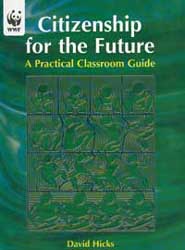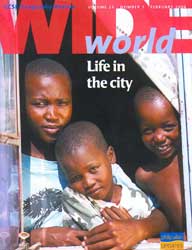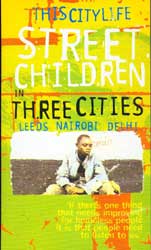SUGGESTIONS FOR SUPPLEMENTARY RESOURCES
Focus on Global Cities
The 'Focus on Global Cities' pages aim to avoid the polarisation of city life between the rich and poor world often depicted in textbooks.
The cities included in the 'Living in the city' activity were selected in order to include every region and the descriptions are designed to provide a snapshot of what it is like to live in these cities in the latter half of 2003. Each one is authentic in that it is written by an individual who lives there. All the contributors were given the same brief in terms of commenting on a range of factors if and when appropriate, such as:
- Cost of Living
- Crime rate
- Night life
- Cultural diversity
- Air quality
- Transport issues
- Changes in the recent past
Click here to download the descriptions of all 28 cities for your own use.
By comparing the information on the different cities, students should be able to grasp that although every city has its own individual characteristics, problems are frequently shared in both developed and developing countries, as are some of the benefits and attractions of urban life.
The Future Cities page and On Camera page on sustainable city living are designed to show that sustainability is as much about social well-being as environmental protection. The two scenarios given for future cities hopefully emphasise that there are no clear solutions! The questions asked here are a kind of 'possible versus preferable' futures activity.
 For more on this approach to 'futures' education: "Citizenship for the Future: A Practical Classroom Guide" (WWF-UK 2001) by David Hicks is an excellent resource to encourage students to think about the future, both in the context of cities and other areas. Part one provides the background and theoretical context for the practical classroom activities, and part two contains a range of photocopiable learning activities that can be adapted for different age groups and topics. Highly recommended. Available from www.worldaware.org.uk (code no. H-101) £13.75.
For more on this approach to 'futures' education: "Citizenship for the Future: A Practical Classroom Guide" (WWF-UK 2001) by David Hicks is an excellent resource to encourage students to think about the future, both in the context of cities and other areas. Part one provides the background and theoretical context for the practical classroom activities, and part two contains a range of photocopiable learning activities that can be adapted for different age groups and topics. Highly recommended. Available from www.worldaware.org.uk (code no. H-101) £13.75.
The 'Learning for Sustainable Cities' project, run by Manchester Development Education Project/World Wildlife Fund, aims to help young people explore the concept of sustainable cities and communities, and to identify opportunities for them to be involved in positive change. The partner organisations - in the UK, Brazil, Canada, India, Italy and The Gambia - are from both development and environmental education traditions. To find out more about the 'Learning for Sustainable Cities' project, visit www.dep.org.uk/cities. Downloadable learning activities (aimed at KS2-3) are available at www.dep.org.uk/activities/index.htm. In Summer 2004, a teaching/learning pack that draws on the work of the project will be available. Contact www.dep.org.uk for more information.
The Urbis museum, Cathedral Gardens, Manchester M4 3BG provides a unique learning environment for pupils to find out about city life - past, present and future. Guided tours and workshops tailored for the National Curriculum are available at the museum. For those that cannot visit the museum, Urbis also offers a number of resources for schools, including an Activity Pack CD, containing images, sounds and video clips from the exhibitions plus activity sheets for classroom use. For further information, visit www.urbis-resources.org.uk/ or contact the education team at 0161 605 8205.
 Wide World (GCSE Geography Review) April 2003, Volume 14 (No 4) includes an article on the brown cloud.. The February 2004, Volume 15 (No 3) edition includes articles on congestion charging in London and urbanisation in Botswana. Wide World is available on subscription from Philip Allan Publishers, Market Place, Deddington, Oxfordshire OX15 0SE; Tel: 01869 338652; email: sales@philipallan.co.uk
Wide World (GCSE Geography Review) April 2003, Volume 14 (No 4) includes an article on the brown cloud.. The February 2004, Volume 15 (No 3) edition includes articles on congestion charging in London and urbanisation in Botswana. Wide World is available on subscription from Philip Allan Publishers, Market Place, Deddington, Oxfordshire OX15 0SE; Tel: 01869 338652; email: sales@philipallan.co.uk
 "This City Life" (Leeds DEC 1999) is an impressive 60 page resource pack that focuses on the problems faced by homeless young people in Delhi, Nairobi and Leeds, emphasising that these problems are global. The pack includes a video of interviews with children talking about their experiences, a set of A4 cards with 16 colour images, information on local initiatives to help homeless young people, and a floppy disk with classroom activities and more case studies. Available from www.worldaware.org.uk (code no. PA-143) £24.75.
"This City Life" (Leeds DEC 1999) is an impressive 60 page resource pack that focuses on the problems faced by homeless young people in Delhi, Nairobi and Leeds, emphasising that these problems are global. The pack includes a video of interviews with children talking about their experiences, a set of A4 cards with 16 colour images, information on local initiatives to help homeless young people, and a floppy disk with classroom activities and more case studies. Available from www.worldaware.org.uk (code no. PA-143) £24.75.
 "Sustainable World: Urbanization" by Rob Bowden (Hodder Wayland 2003, ISBN 0750239891) is a new book that looks at the problems of urbanization and shows the reader how they can play an active part in ensuring a more sustainable urban future. 'Databank' boxes give key facts, and 'opinion panels' highlight quotes from well-known speakers on the subject. Available from www.amazon.co.uk £11.99.
"Sustainable World: Urbanization" by Rob Bowden (Hodder Wayland 2003, ISBN 0750239891) is a new book that looks at the problems of urbanization and shows the reader how they can play an active part in ensuring a more sustainable urban future. 'Databank' boxes give key facts, and 'opinion panels' highlight quotes from well-known speakers on the subject. Available from www.amazon.co.uk £11.99.
"Cities and Citizenship" (TIDE, Birmingham 2004, ISBN 0948838657) is a new resource available from May 2004 that explores the potential for using cities as a useful context for tackling citizenship and development issues at Key Stage 3. The book provides learning activities and up-to-date case study material from Colombia, Kenya and Pakistan to enable pupils to look at a range of perspectives and to begin to make connections with their own lives. For more information, email info@tidec.org or visit www.tidec.org
Visit Habitat for Humanity International a non-profit organisation that builds affordable housing in partnership with communities that lack adequate shelter as another example of sustainable development. The website provides descriptions and images of its projects in 92 different countries.
"Cities: a better life?" (Worldaware 1992) compares Cidabe do Lobo in Brazil, Mexico City and a housing estate in London to explore some of the problems faced by people living in cities, comparing one area to another. Includes a teacher's guide and student resource pack. Available from www.worldaware.org.uk (code no. PA-178) £6.00.
Films set in cities are another useful learning resource as a way of looking at urban life in different parts of the world. For example: "Blade Runner", "La Haine", "Falling Down", "City of God" and "The Year of Living Dangerously".
Eye on China
The 'Eye on China' pages are designed to complement existing resources for schools, focusing on industrial change and the impact of globalisation on the Chinese economy following China's membership to the World Trade Organisation in 2001. Issues covered include the spread of HIV/AIDS across the country, human rights of workers in Guangdong province, and the export of hazardous waste to China. All of these issues lend themselves well to developing a citizenship dimension to the study of China.
The answers to the circle of true/false facts are that they are all true except:
No.3: 70% of the world's photocopiers are made in Guangdong province, China.
No.5: The number of mobile phone users in China could rise by another 50 million a year.
"Images of China" by David Waugh & Chris Rowley (Geopix 2000) is a CD-ROM with over 380 photographs, each with a title, location map and extended captions grouped into 16 topics. It is possible to extract text from files on the CD-ROM, but its real strength is the extent of the photos that can also be exported to print or save on disk for incorporation into students' own analysis of change in China. It is an excellent supplementary resource to David Waugh's China textbooks and the Channel Four series for schools, "Changing China". Available from www.worldaware.org.uk (code no. PA-102) £50.00.
CREDITS
The Global Eye Secondary website, Spring 2004, was written by Simon Scoones.
Contributions and assistance from:
Ali Ahmad, Sharmel Ali, Eszter Antal, José Assuncão, Patricia Sanchez Baracaldo, Kryzstof Biernacki, Barbara de Bois, Ali Brownlie, Andrea Cornwall, Bertha Diaz, Bob Ely, Daniel Ford, Simone Goetschalckx, Silvia & Carlos Henao, Edward Hill (Living Streets), Kristín Jóhannesdóttir, James Keeley, Kenneth Light, Samuel Musyoki, Shabanji Opukah, John-Paul Page, Martin Parker, Eugenio Renjifo, Nikolai Rovneiko, Hannah Schellander, Paras Shah, Filiz Telek (Habitat for Humanity International), Amanda Vernon, Carolina Villaverde, Derek Watmough, Sarah Westervelt (Basel Action Network), Deniz Yalcin.
Photographs:
Panos Pictures, Rex Features, Simon Scoones/Worldaware.